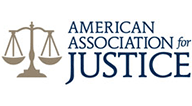California is has more registered motorcycles than any other state in the union. In 2013 that number was close to 800,000 and has certainly grown since. The year round riding climate, the beautiful scenic roads and the many different rallies and events, beckon motorcyclists to call California their home.
Anyone who has traveled the highways of California must be familiar with the many groups of bikers. In the case of an organized rally these groups may number in the hundreds, but more common are smaller groups of around twenty, more or less. These riders are often members of motorcycle clubs or riding groups out to enjoy a ride together.
Anyone who is unfamiliar with the differences between a motorcycle club and a riding club will view these groups as being the same, often in a negative light, referring to them as gangs. They see the ‘colors’ or back patches and assume that they are outlaw bikers. In most cases those views are distant from reality. Some of them may be in, or retired from, law enforcement while others may be military veterans. Many are riding for charitable causes. There are, however, distinct differences between motorcycle clubs and riding groups.
What is a Motorcycle Club vs. a Riding Group?
A motorcycle club is a lifestyle where members have sworn to a lifelong commitment. It is a brotherhood that makes attendance at all meetings and functions mandatory. To join the club, an active member must sponsor a potential member. Some have requirements such as previous law enforcement or military experience. Many motorcycle clubs will not allow a member to leave without facing retribution. Most motorcycle clubs allow only cruiser style bikes.
Motorcycle riding groups differ from clubs in several ways. They often allow women members, accept any style of bikes including sport bikes, charge dues and allow members to leave at their own free will. These groups are formed strictly for the pleasure of socialized riding. The two things that clubs and groups share in common is the wearing of back patches and riding together.
Dangerous Practices by Motorcycle Riders
Motorcycles traveling together in groups of any size should not pose a danger to each other or to those with whom they share the road. Motorcycles are permitted on most multi-lane highways to ride two abreast when cruising in groups. But some groups engage in dangerous practices, placing their safety, and the safety of others, in jeopardy such as:
· Dangerous lane splitting – Lane splitting, or white lining, is legal in California by legislation signed by the Governor last year, but there are safety rules that apply. Lane splitting is the practice of one or more motorcycles travelling between lanes of slower traffic. By law, the speed of the bike cannot be more than 15 mph faster than the slower traffic and cannot not exceed 50 mph. Sport bikes are often seen lane splitting at speeds far beyond those limits. Motorists may not see a fast approaching motorcycle passing between lanes until it is too late.
· Swarming – When a group of motorcycles occupies several lanes of a highway and swerves in and out, it is referred to as swarming. This behavior often surrounds other vehicles and is often meant to be intimidating but it places the cyclist at the greatest risk of serious injury more than the other drivers. Drivers of passenger vehicles cannot determine the location of every bike in each lane, especially when they are constantly shifting position.
· Weaving – A common sight on highways, especially with riders of high performance sport bikes, is weaving in and out of traffic. The riders try to maintain a fast pace while dodging in and out of lanes and even resorting to the shoulder of the road to pass. Loose debris or automotive fluid residue can cause an immediate loss of control of a weaving bike at high speed.
· Speeding – Sport bikes often maintain high speeds on highways, exceeding 100 mph. A bike at that speed covers the length of a football field every two seconds making it impossible to avoid approaching hazards. When grandstanding (wheelies) is added to the speed a greater potential for disaster exists. This dangerous practice is often the riders risking their lives while showing off to each other.
What Follows a California Motorcycle Accident?
It is possible for a motorcyclist to be injured traveling with a group, or individually, while obeying all the rules of the road while lane sharing, lane splitting or just cruising along the road. When an accident between the biker and a passenger vehicle happens, especially at high speed, the injuries to the rider and/or passenger will likely be severe. Severe injuries bring accumulating medical bills, loss of income, rehabilitation and therapy costs. There is also great pain and suffering.
Sections 1431-1431.5 of the California Civil Code provide that comparative fault principles are applied to apportion liability for accidental injuries. The parties at fault will be responsible for paying for all or a portion of the damages they caused. This means that the rider of a motorcycle, injured in a crash, may still collect damages against another party even if the cyclist was partially at fault.
At Vititoe Law Group we believe that the best protection a motorcycle rider can attain is from rider education. If you were injured in a motorcycle crash and have questions about whether or not you have a valid claim, reach out to a California motorcycle accident attorney at Vititoe Law Group to learn more about your legal rights and options. There is no upfront cost or obligation. Call 818-851-1886.







